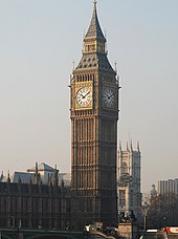Overview
London Councils is concerned about the escalation of health, public safety and safeguarding challenges as a result of the recent placement of asylum seekers in London. London Councils has had constructive and open discussions on these issues with Home Office officials as we’ve collectively grappled with the challenges of our asylum system.
London Councils urges the government to push forward with the multi-factor regional dispersal model, which has been agreed by all London boroughs, and was developed as part of the government’s new asylum dispersal policy. The policy aims to achieve a more equitable distribution of asylum seekers across the country and ultimately, to move asylum seekers out of hotels and into more appropriate dispersal accommodation.
This briefing summarises the pressures facing London boroughs, as well as London Councils’ key asks of government. It also includes proposed new ways of working that strengthen partnership engagement and allow local authorities oversight of asylum placements, as well as steps to ensure the health and safety of asylum seekers. London Councils stands ready and willing to work with government to find sustainable solutions to the pressures that boroughs are facing.
Pressures facing London boroughs
1. Communication and consultation from Clearsprings
- Asylum accommodation/hotels have been stood up in parts of London with limited consultation from Clearsprings (who work in partnership with the Home Office to procure accommodation)and in some cases without any notice.
- Hotels are still being used in London boroughs that are already under significant pressure with authorities reporting being over the 1 asylum seeker in 200 of the settled population threshold set by the Home Office.
2. Safeguarding and health concerns
a) Safety
- There have been reports of serious offences committed against asylum seekers which have occurred or been disclosed in London hotels.
- The standard of asylum accommodation needs to be assessed including basic fire safety standards and overcrowding.
- There have been two cases in which groups of people seeking asylum were bussed to Victoria Coach station from Manston, Kent and left without accommodation.
- There have also been police reports of increased far-right activity, and concern around hotels being targeted following the firebombing of the centre in Dover.
b) Public health issues
- Despite health screenings, people are being transferred with notifiable illnesses, including TB, diphtheria, scabies and monkeypox.
c) Unaccompanied asylum-seeking children (UASC)
- In some cases, UASCs are being identified in contingency hotels due to mis-age assessments at the border, which presents safeguarding issues.
- There are concerns about the number of UASC identified by councils, and if the National Transfer Scheme can meet this demand.
- Children have also been going missing from UASC hotels and a significant number are presenting at local authorities in London.
3. Funding and capacity issues
- The financial pressure on local authorities is unsustainable. More dedicated funding and clarity on financial commitment is needed.
4. Long term issues
- There are concerns regarding social cohesion issues and the isolation of asylum seekers.
- There is a general disconnect between the various refugee and resettlement schemes (for example each route comes with different rights and entitlements, different funding streams for local authorities, and different teams within the government supporting these various routes).
- The lack of affordable housing supply continues to be problematic for asylum-seeking placements with a growing number of homeless presentations.
Key asks for the government
Short-term actions:
1. Communication with Clearsprings, and procurement practice
- Clearsprings should use the multi-factor dispersal model that London Councils developed as part of the government’s asylum dispersal policy. The model informs where to stand up asylum accommodation, including contingency hotels (but overall, hotel procurement should be avoided in London unless it is considered necessary, especially avoiding boroughs with disproportionate pressures, for example Hounslow and Hillingdon).
- Clearsprings should share information on asylum accommodation being considered and the number of placements required as early as possible. This would ensure that councils are properly consulted and have a clear escalation pathway for serious concerns.
2. Safeguarding and public health
- Councils should be consulted on the safeguarding protocol and local risk assessments of hotel sites – this should entail sharing data on hotel sites with the Met Police and the London Fire Brigade.
- Ensure separate accommodation for single males and families and avoid mixed hotel use.
- Health screening/health assessments should be undertaken before asylum seeker placements in London, and the results should be shared with local authorities and local health services, including data on who arrivals have had close contact with.
- An urgent review of the age-assessment process would help to identify why children are mis-age-assessed.
- A review and plan (detailing mitigations in place) for children that have gone missing from UASC hotels.
3. Funding
- Fund hotel placements like dispersal accommodation placements are funded (i.e. £3,500 per bed-space).
- Additional funding to accompany the request of responsibility and oversight to local authorities on the contingency process (i.e. concerning case-working of asylum seekers, and approval of accommodation as above).
Medium to long-term actions:
- Progress must be made on regional dispersal plans as previously agreed, including a clear mechanism to monitor the procurement practice of Clearsprings and other providers and confirmation of funding beyond April 2023.
- Joint working on ways to increase accommodation supply, including housing acquisition programmes.
- Allowing temporary work permits for asylum seekers, so they can integrate and contribute to the economy.
- Improve the system for processing asylum seeker claims.
- The Home Office should share projections for future asylum arrivals and work with local authorities to plan for these.
- There should be coordination with other refugees/resettlement programmes to take account of the cumulative impact on local areas and a cross-departmental team in government to engage with local authorities.

